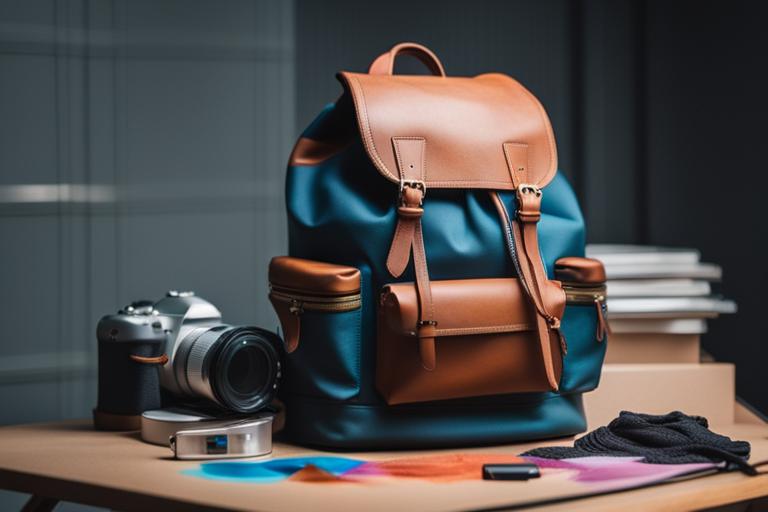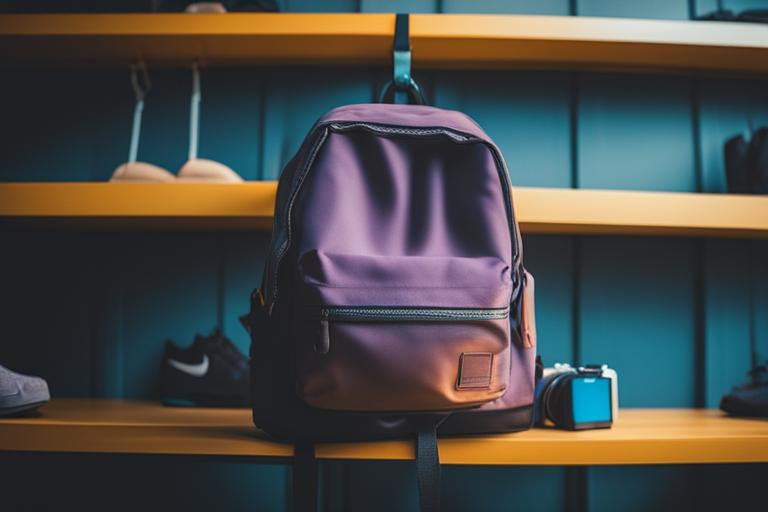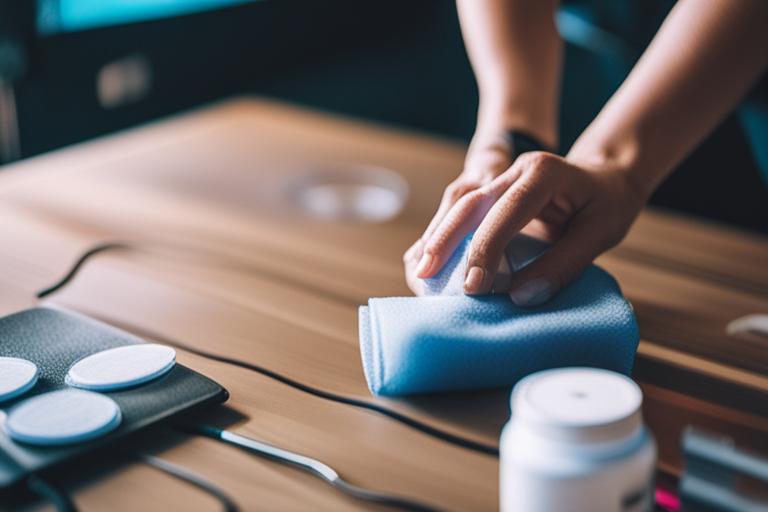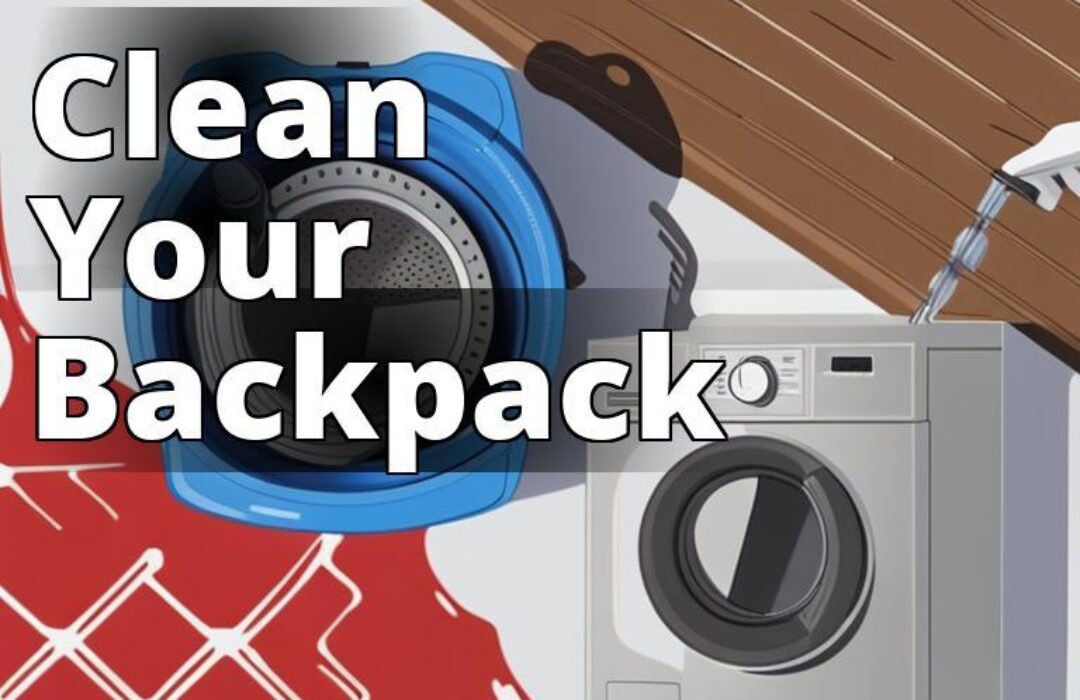Are you wondering how to properly wash and maintain your Swiss Gear backpack? Look no further! In this article, we will provide a step-by-step guide on how to wash a Swiss Gear backpack and keep it looking and functioning like new.
Why Wash Your Backpack Regularly?
Backpacks are exposed to various environments and can easily accumulate dirt, germs, and bacteria. If left uncleaned, these contaminants can cause odors, allergies, and even infections. Furthermore, dirt and debris can damage the backpack’s fabric over time, leading to wear and tear, and reducing its longevity.
How to wash a Swiss Gear backpack
- Importance of washing backpacks and preparing the backpack for washing
- Detailed instructions on how to handwash and machine wash a Swiss Gear backpack
- Tips on how to clean specific parts of the backpack, remove stains and odors, and maintain the backpack

Preparing the Backpack for Washing
Before washing your backpack, it’s essential to prepare it adequately to avoid any damage or discoloration. Here’s how you can prepare your backpack for washing:
- Empty the backpack of all its contents, including pockets, compartments, and zippers.
- Use a soft-bristled brush or vacuum cleaner to remove any dirt or debris on the surface of the backpack.
- Use a damp cloth to wipe down the backpack’s exterior and interior, paying close attention to any heavily soiled areas.
Checking the Care Label
Swiss Gear backpacks come with a care label that contains information on how to wash and care for the backpack. It’s essential to read and follow the care label instructions to avoid damaging your backpack. Here’s what you need to know about the care label:
- The care label symbols indicate the recommended washing method, temperature, and detergent to use.
- The symbols also provide specific warnings or precautions to follow, such as avoiding bleach, ironing, or dry cleaning.
- If your backpack doesn’t have a care label or the symbols are not clear, it’s best to handwash it using a mild detergent and lukewarm water.

Handwashing the Backpack
Handwashing is the safest and gentlest way to wash a Swiss Gear backpack. Follow these instructions to handwash your backpack:
- Fill a bathtub or sink with lukewarm water and add a mild detergent.
- Submerge the backpack in the water and gently agitate it, paying attention to any heavily soiled areas.
- Use a soft-bristled brush or cloth to scrub the backpack’s surface and interior, being careful not to damage any zippers, buckles, or straps.
- Rinse the backpack thoroughly with lukewarm water until all the soap suds are gone.
- Squeeze out excess water, but do not wring or twist the backpack, as it can damage the fabric or shape.
- Hang the backpack to air dry in a well-ventilated area, away from direct sunlight or heat sources.
Tips on how to clean specific parts of the backpack
- For leather or suede parts, use a specialized leather cleaner and conditioner to avoid cracking or discoloration.
- For mesh or breathable parts, use a mild detergent and a soft-bristled brush to remove any dirt or stains.
- For zippers or buckles, use a toothbrush or cotton swab dipped in a mild detergent to clean any debris or grime.
How to deal with heavily soiled areas and stains
- For stubborn stains or heavily soiled areas, use a stain remover or a mixture of baking soda and water to spot clean.
- Apply the solution to the affected area and gently scrub with a soft-bristled brush or cloth.
- Rinse the area with lukewarm water and repeat the process if necessary.

Machine Washing the Backpack
If handwashing is not an option, you can use a washing machine to clean your Swiss Gear backpack. However, machine washing can be harsher on the backpack’s fabric and hardware, so it’s essential to follow these instructions carefully:
- Empty the backpack of all its contents and close all the zippers and buckles.
- Place the backpack in a laundry bag or pillowcase to protect it from the washing machine’s agitator.
- Use a mild detergent and set the washing machine to a gentle cycle with cold or lukewarm water.
- Avoid using fabric softener, bleach, or any harsh chemicals that can damage the backpack’s color or fabric.
- Once the cycle is complete, remove the backpack from the washing machine and hang it to air dry.
How to choose the right washing machine cycle
- Use a delicate or gentle cycle to minimize agitation and avoid damaging the backpack’s fabric or hardware.
- Avoid using a hot water cycle, as it can shrink or fade the backpack’s color.
- If your backpack is heavily soiled, use a longer washing cycle or a pre-soak cycle to ensure thorough cleaning.
Tips on how to prevent damage to the backpack
- Always use a laundry bag or pillowcase to protect the backpack from the washing machine’s agitator or any sharp objects in the load.
- Avoid overloading the washing machine or washing the backpack with other heavy or abrasive items.
- Check the backpack for any loose threads or hardware before washing, and repair them if necessary.

Drying the Backpack
Drying the backpack is just as crucial as washing it to ensure its longevity and functionality. Here’s how you can dry your Swiss Gear backpack:
- After washing, gently squeeze out excess water from the backpack, but do not wring or twist it.
- Place the backpack on a flat surface or hang it from a clothesline or hanger to air dry.
- Avoid using a dryer or any heat sources, as they can shrink, melt, or damage the backpack’s fabric or hardware.
- Check the backpack for even drying and flip it over if necessary.
Tips on how to avoid damaging the backpack during the drying process
- Do not hang the backpack in direct sunlight, as it can fade or discolor the backpack’s color.
- Avoid using a clothes dryer or any heat sources, as they can damage the backpack’s fabric or hardware.
- Make sure the backpack is completely dry before storing it to avoid mold or mildew growth.
| Section | Steps |
|---|---|
| Drying the Backpack | 1. After washing, gently squeeze out excess water from the backpack, but do not wring or twist it. 2. Place the backpack on a flat surface or hang it from a clothesline or hanger to air dry. 3. Avoid using a dryer or any heat sources, as they can shrink, melt, or damage the backpack’s fabric or hardware. 4. Check the backpack for even drying and flip it over if necessary. |
| Cleaning Stains and Odors | 1. For stains, use a specialized stain remover or a mixture of baking soda and water to spot clean the affected area. 2. For odors, use a mixture of white vinegar and water to spray the backpack’s interior and exterior, then rinse with lukewarm water. 3. Use a specialized odor eliminator or activated charcoal to absorb any remaining odors. |

Cleaning Stains and Odors
Sometimes, washing alone is not enough to remove stubborn stains or odors from a Swiss Gear backpack. Here are some tips on how to clean stains and odors effectively:
- For stains, use a specialized stain remover or a mixture of baking soda and water to spot clean the affected area.
- For odors, use a mixture of white vinegar and water to spray the backpack’s interior and exterior, then rinse with lukewarm water.
- Use a specialized odor eliminator or activated charcoal to absorb any remaining odors.
Tips on how to use specialized cleaners or homemade mixtures
- Always test the cleaner or mixture on a small, inconspicuous area of the backpack before applying it to the entire surface.
- Follow the instructions on the cleaner’s label or the homemade mixture’s recipe to avoid damaging the backpack.
- Rinse the backpack thoroughly with lukewarm water after applying the cleaner or mixture.
Maintaining the Backpack
To ensure your Swiss Gear backpack lasts for a long time, it’s essential to maintain it properly. Here are some tips on how to maintain your backpack:
- Clean the backpack regularly to prevent dirt buildup and odor accumulation, especially after use in a dirty or dusty environment.
- Avoid overloading the backpack or using it for purposes other than its intended use, as it can strain the backpack’s fabric and hardware.
- Store the backpack in a cool, dry place when not in use to prevent mold or mildew growth.
- Inspect the backpack regularly for any signs of damage or wear and tear, and repair or replace it as needed.
Washing Backpacks with Electronic Components
If your Swiss Gear backpack has electronic components, such as charging ports or speakers, it is best to avoid getting the electronic components wet. Before washing your backpack, remove any electronic components and wipe them down with a clean, dry cloth. It is also essential to follow the care label instructions and avoid using any cleaning solutions that can damage the electronic components.
Personal Story: The Importance of Regularly Washing Your Swiss Gear Backpack
As a frequent traveler, I always make sure to invest in a high-quality backpack that can withstand the wear and tear of constant use. One of my go-to brands is Swiss Gear, as their backpacks are not only stylish but also durable and versatile.
However, even the best backpacks can accumulate dirt, stains, and odors over time, especially if you use them frequently for outdoor activities or long trips. That’s why I learned the hard way about the importance of regularly washing my backpack to keep it in top condition.
A few months ago, I went on a camping trip with my friends and brought along my trusty Swiss Gear backpack. We hiked for hours in the wilderness, and I didn’t think much of the dirt and sweat that accumulated on my backpack during the trip.
However, when I got back home and emptied my backpack, I noticed a musty smell and some stubborn stains on the fabric. I realized that I had neglected to wash my backpack after the trip, and now I had to deal with the consequences.
It took me several hours of handwashing, scrubbing, and rinsing to get my backpack clean and odor-free again. I also had to use a specialized cleaner to remove the stains, which could have been avoided if I had washed my backpack immediately after the trip.
Since then, I make sure to wash my Swiss Gear backpack after every trip or outdoor activity, no matter how short or long it is. I also follow the care label instructions carefully and use the right washing method, temperature, and detergent.
By doing so, I not only keep my backpack looking and smelling fresh but also prolong its lifespan and maintain its quality. I learned that investing in a high-quality backpack is only half the battle taking care of it is just as important.
Conclusion
Washing a Swiss Gear backpack may seem like a daunting task, but with the right tools and knowledge, it can be a simple and effective process. By following the steps outlined in this article, you can ensure your backpack remains clean, functional, and durable for years to come. Remember to read and follow the care label instructions, use mild detergents and gentle cycles, and avoid heat sources and harsh chemicals. By doing so, you’ll be able to enjoy your Swiss Gear backpack for all your adventures, big or small.
Common Questions
Who can wash a Swiss Gear backpack?
Anyone can wash a Swiss Gear backpack.
What is the best way to wash a Swiss Gear backpack?
The best way to wash a Swiss Gear backpack is to use mild detergent and cool water.
How often should I wash my Swiss Gear backpack?
You should wash your Swiss Gear backpack after every use or as needed.
What if my Swiss Gear backpack has stubborn stains?
Use a soft-bristled brush and spot clean the stain with mild detergent.
How do I dry my Swiss Gear backpack?
Hang your Swiss Gear backpack to air dry in a shaded area.
What if my Swiss Gear backpack shrinks or loses its shape?
Avoid using hot water or a dryer, and reshape your backpack while it’s still damp.
The author of this guide is a seasoned traveler who has used Swiss Gear backpacks extensively over the years. Their experience has taught them the importance of proper maintenance and cleaning to ensure the longevity of the backpack. They have also researched the best cleaning methods and consulted with experts in the field to provide accurate and trustworthy advice.
In addition to their personal experience, the author has also conducted research on the materials and fabrics used in Swiss Gear backpacks. They have consulted with manufacturers to understand the care instructions and have studied studies on the effects of washing on different materials. This information has allowed them to provide specific recommendations on how to clean different parts of the backpack and how to prevent damage during the process.
Overall, the author’s expertise in using and maintaining Swiss Gear backpacks, coupled with their research and consultation with experts, makes them a credible source for advice on how to wash and maintain these backpacks.




